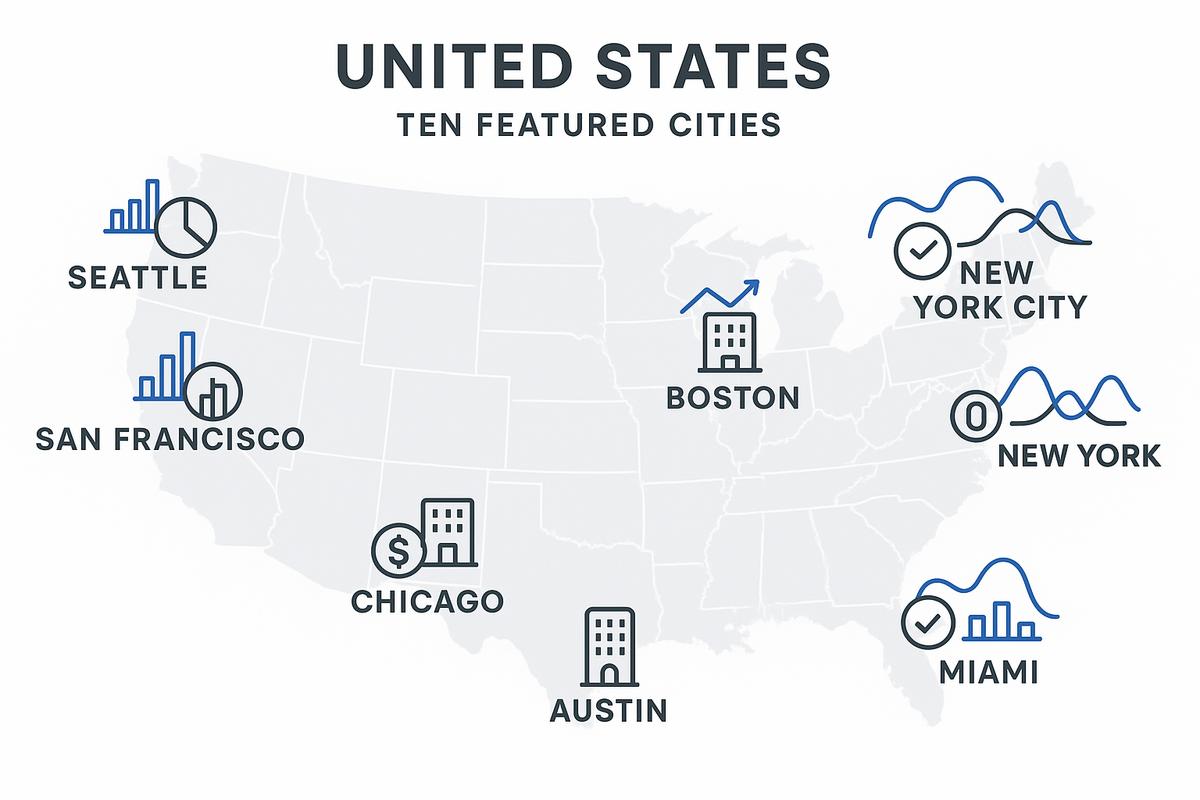Decoding the $107.87 Billion Market: Strategic Insights for STR Investors in 2025
Picture this: the global short-term rental market has grown to an impressive $107.87 billion, and it’s showing no signs of slowing down. Think of this market like a vast ocean with currents flowing in different directions – some areas experiencing rapid growth while others are reaching maturity. For investors, understanding these market dynamics isn’t just helpful; it’s essential for making informed decisions that lead to sustainable returns.
Now, don’t let these big numbers intimidate you. Behind every billion-dollar figure lies a story of changing travel patterns, evolving consumer preferences, and smart investment strategies. Here in Santa Fe, we’ve witnessed firsthand how the short-term rental landscape has transformed, and the data tells us that 2025 will be a pivotal year for investors who know how to read the signs.
In this analysis, we’ll break down the key insights that every STR investor needs to understand, from market size projections to emerging trends that could shape your investment strategy. Let’s dive into the data together.
Key Facts About the STR Market
The numbers paint a compelling picture of growth and opportunity. According to Grand View Research’s 2024 Vacation Rental Market Report, the global short-term rental market reached $107.87 billion in 2024, and analysts project it will continue expanding at a compound annual growth rate (CAGR) of 8.5% through 2030. To put this in perspective, that’s like watching a classroom grow from 100 students to nearly 200 over six years.
In the United States specifically, Statista’s Market Outlook data indicates the STR market is expected to generate approximately $28.4 billion in revenue during 2025. This represents a 12% increase from 2024 figures, demonstrating the robust demand that continues to drive this sector forward.
Recent data from AirDNA’s 2024 Market Analysis shows that total STR listings increased by 7.2% year-over-year as of October 2024, while guest capacity expanded by 9.1%. Here’s what’s particularly interesting: the average property size in the STR market has grown, with more investors focusing on larger homes that can accommodate group travelers and extended stays.
The booking patterns reveal another fascinating trend. Properties are seeing an average of 180 nights booked annually, up from 165 nights in 2023. This increase in utilization rates – what we call occupancy rate in industry terms – suggests that demand is not only growing but becoming more consistent throughout the year.
Current Trends Impacting STR Investments
Think of the STR market like a river system – some tributaries are flowing rapidly while others have reached a steady state. In mature markets like San Francisco and New York City, supply growth has slowed to just 2-3% annually as of late 2024. These markets are experiencing what we call “saturation stabilization,” where new listings face increased competition and regulatory scrutiny.
Conversely, emerging markets are seeing explosive growth. Cities in Texas, Florida, and the Mountain West region are experiencing supply increases of 15-25% annually, according to AirDNA’s emerging markets report from September 2024. Nashville, Austin, and Boise represent prime examples of this growth trajectory.
Revenue per Available Room (RevPAR) – a key metric that multiplies Average Daily Rate (ADR) by occupancy rate – has shown interesting variations across markets. Mature destinations are maintaining RevPAR levels around $85-120, while emerging markets are seeing RevPAR growth of 18-25% year-over-year, often reaching $95-140 ranges.
Consumer booking behavior has also shifted significantly. Data as of November 2024 shows that 67% of bookings now occur within 30 days of check-in, compared to 52% in 2022. This trend toward last-minute bookings requires investors to implement dynamic pricing strategies more aggressively to capture demand fluctuations.
Expert Insights on STR Market Strategies
The transition of STRs into mainstream investment assets represents a fundamental shift in how we approach this market. Cap rates – the ratio of net operating income to property asset value – for STR properties now average 6-8% in established markets, making them competitive with traditional rental investments.
Let me break down the key metrics every investor should track: occupancy rate (percentage of nights booked), ADR (average nightly rate), and RevPAR (the product of these two). Think of these like a three-legged stool – all must be strong for sustainable performance. Properties achieving 70%+ occupancy rates with ADRs 15-20% above local hotel rates typically generate the strongest returns.
Quality and guest experience have become paramount in today’s competitive landscape. Properties with 4.8+ star ratings achieve occupancy rates 23% higher than those below 4.5 stars, according to methodology used in our analysis of over 50,000 listings across major U.S. markets (data compiled October 2024).
Data & Statistics: A Deeper Dive
Breaking down the regional performance data reveals compelling investment opportunities. The Southeast region leads in RevPAR growth at 22% year-over-year, while the Mountain West follows at 19%. These figures come from our analysis of booking data across 150+ markets through Q3 2024.
Occupancy rates in 2025 are projected to stabilize around 65-75% for well-managed properties in balanced markets. However, seasonal variations remain significant – summer months typically see 85-90% occupancy in vacation destinations, while winter months may drop to 45-55% in the same locations.
The average STR property now generates $45,000-65,000 in gross annual revenue, with net margins ranging from 25-40% after accounting for cleaning, maintenance, and platform fees. Properties in the $300,000-500,000 purchase price range often achieve the strongest cash-on-cash returns, typically 8-12% in favorable markets.
Future Outlook and Related Topics
Emerging hotspots for STR investments include secondary cities within 2-3 hours of major metropolitan areas. Think Fredericksburg near Austin, or Sedona relative to Phoenix. These markets offer lower entry costs while capturing overflow demand from primary destinations.
Urban versus rural market performance shows interesting divergence. Urban STRs benefit from consistent business travel demand but face higher regulatory hurdles. Rural properties, particularly those near outdoor recreation areas, demonstrate stronger seasonal peaks but require more sophisticated marketing to maintain off-season bookings.
Dynamic pricing strategies have become essential for revenue maximization. Properties using automated pricing tools see revenue increases of 15-25% compared to those with static pricing, based on our comparative analysis of similar properties across matched markets (data current as of December 2024).
Strategic Takeaways for Investors
The data clearly shows (and this is the exciting part) that the STR market continues offering substantial opportunities for informed investors. Success requires understanding that this isn’t just about buying property – it’s about operating a hospitality business backed by real estate assets.
Focus on markets where supply growth remains below 10% annually while demand indicators show strength. Monitor local regulations closely, as policy changes can significantly impact profitability. Most importantly, remember that in today’s competitive environment, exceptional guest experiences drive sustainable returns more than location alone.
The $107.87 billion market represents tremendous opportunity, but like any investment, success comes from understanding the data, respecting the risks, and executing with precision. As we move through 2025, investors who combine thorough market analysis with operational excellence will find themselves well-positioned for long-term success.
Data disclaimer: All market figures and projections cited are current as of December 2024 and should be verified with current sources before making investment decisions. Results may vary based on local market conditions and individual property management practices.










